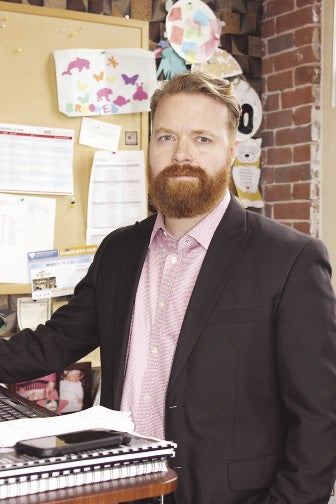For five years, WBJ published its annual The Boardroom Gap report, meant to hold to account the business community’s commitment to diversity.
Get Instant Access to This Article
Subscribe to Worcester Business Journal and get immediate access to all of our subscriber-only content and much more.
- Critical Central Massachusetts business news updated daily.
- Immediate access to all subscriber-only content on our website.
- Bi-weekly print or digital editions of our award-winning publication.
- Special bonus issues like the WBJ Book of Lists.
- Exclusive ticket prize draws for our in-person events.
Click here to purchase a paywall bypass link for this article.
In 2018, WBJ published a six-part investigation called The Boardroom Gap about the lack of gender diversity in Central Massachusetts business leadership, which showed the region lagged behind both state and national averages in having women in executive leadership and board seats. The findings were so shocking and well read, the next year WBJ launched its annual Women in Leadership edition, with an update to The Boardroom Gap as the centerpiece.

For five years, WBJ published its annual The Boardroom Gap report, meant to hold to account the business community’s commitment to diversity by researching the gender of more than 1,600 leaders at 75 of the region’s most prominent organizations. Last year’s report showed Central Massachusetts was making slow progress toward more inclusive leadership, with 37% of the positions filled by women, but still a far cry from equal representation.
This year, I decided this Women in Leadership edition would be the first without The Boardroom Gap investigation attached to it. This was a very difficult decision to not pursue this report for at least one year, after it had become so meaningful to the Central Massachusetts business community, particularly efforts toward diversity and inclusion. Yet, this was the right call. The storytelling around The Boardroom Gap numbers had gotten stale, and as a newsroom we struggled to add meaning and context to the findings of the investigation, beyond just publishing a large chart focused on numbers. For the last two years, the main stories of the Women in Leadership issue were developed almost entirely independently from the investigation, and we shoehorned in the findings after the first article drafts were written. I want to see if we can find a better way.
This doesn’t mean we won’t pursue stories large and small related to diversity and inclusion. This edition is full of features on powerful women and female-led organizations making changes in industry and society. Staff Writer Isabel Tehan, who covers the diversity and inclusion beat, did a mini version of The Boardroom Gap investigation looking strictly at major public company CEOs, and the findings are in her story “No Central Mass. public company has a female CEO, although that’s not deterring young professionals." More than just this one edition, diversity and inclusion remains central to WBJ’s coverage of the Central Massachusetts economy, and you will see that throughout all our editions and on WBJournal.com.

